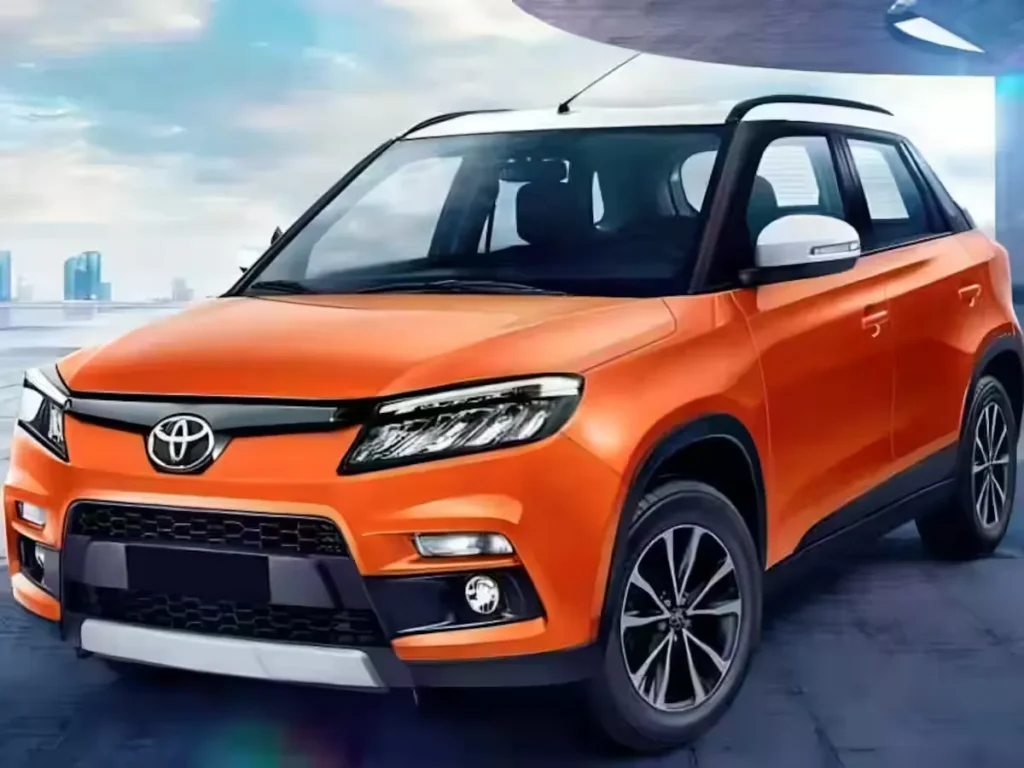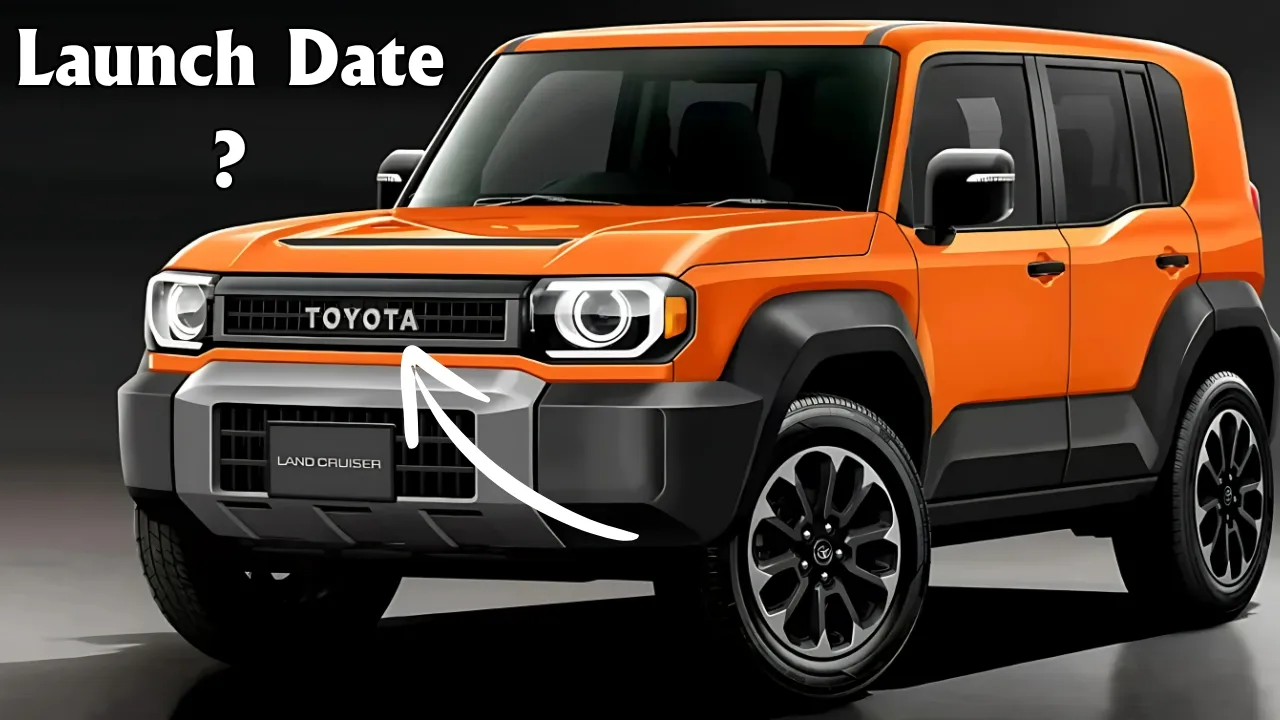Toyota Mini Fortuner: In a move that has set the automotive world abuzz, Toyota is gearing up to launch its highly anticipated Mini Fortuner.
Unveiling these advantages of the iconic Fortuner, through this compact SUV, will reach a wider audience and will combine the urban applicability with the off-road capability.
With the launch date fast approaching, let’s discuss the specifics of what may be a revolution in the compact SUV market.
Toyota Mini Fortuner Launch Date: The Countdown Begins
The automotive press is set ablaze by speculation regarding the presentation of the Mini Fortuner. While Toyota has never been one to disclose much about its release dates, it is being reported by the industry that a late 2025 releasedate is likely.
Due to this strategic window of opportunity, Toyota can precisely calibrate the vehicle to the best possible level, as is expected for the Fortuner brand.
Accredited experts also forecast a major press launch in the third quarter of 2025, followed by showroom launches by November or December of 2025.
This timeline also accurately time the release of the Mini Forerunner to earn the attention of buyers looking for a great car to start the new year.
Toyota Mini Fortuner Price Point: Accessibility Meets Premium
One of the most eagerly anticipated aspects of the Mini Fortuner is its price point. Toyota has always been adept at striking a balance between quality and affordability, and the Mini Fortuner is expected to continue this tradition.
According to industry analyses and competitive market share, this is what we may expect.
- Base Model: ₹12 lakh to ₹14 lakh
- Mid-range Variant: ₹15 lakh to ₹16.5 lakh
- Top-end Variant: ₹17 lakh to ₹18 lakh
These price range indications place the Mini Fortuner in a competitive position of the compact SUV market. This should be understood to be that these are estimates that may vary depending on final specifications and market conditions at the time of release.
Pricing policy is in line with Toyota’s policy to make Mini Fortuner accessible to a much broader (particularly first tier and lower tier) population group without compromising the prestige of the Fortuner brand.
This methodology is likely to appeal to both novice SUV buyers and those who want to step up to an SUV, without putting a strain on the wallet.
Toyota Mini Fortuner Engine Options: Power Meets Efficiency
- Petrol Engine
- Type: 1.5-liter, 4-cylinder, turbocharged
- Power Output: Approximately 160-170 PS
- Torque: Around 240-250 Nm
- Transmission: 6-speed manual and CVT options
This happy petrol engine is produced to deliver an optimal combination of performance and fuel economy. Because of its turbocharging technology, it is expected to have good acceleration and enough power for both city driving and freeway driving.
- Diesel Engine
- Type: 2.0-liter, 4-cylinder, turbocharged
- Power Output: Approximately 150-160 PS
- Torque: Around 340-350 Nm
- Transmission: 6-speed manual and 6-speed automatic options
It is safe to assume that diesel offering will be a torque monster with maximum pulling and fuel economy. Owing to this engine choice, it is bound to appeal to long distance travellers and those looking for some grunt on the road and in off-road escapades in general.
All four engine choices are reported to come equipped with Toyota’s latest fuel-reduction engine technologies such as start-stop and regenerative brakes. The expected mileage figures are:
- Petrol: 15-17 km/l
- Diesel: 18-20 km/l
And if true, these are things which will put the Mini Fortuner at the lower end of the fuel economy range available to its class of rivals, a feature which will important to many SUV purchasers.
Toyota Mini Fortuner Features and Technology: A Cut Above

Infotainment System: A large (e.g., 8 or 9in) touchscreen with Apple CarPlay and Android Auto compatibility.
Digital Instrument Cluster: A completely digital, or analog-digital hybrid, instrument panel for unambiguous presentation of information.
Advanced Safety Features: Toyota’s Safety Sense features (adaptive cruise control, lane departure warning and automatic emergency braking).
Comfort Features: Dual-zone air conditioning, ventilated seating and sunroof in optional spec.
Off-road Capabilities: The system has terrain management, hill descent control, and optionally a locking differential for 4×4 models.
Connectivity: Applications of Toyota Connect remote vehicle monitoring control using mobile phone.
Toyota Mini Fortuner Design and Dimensions: Compact Yet Commanding
- Length: Approximately 4300-4400 mm
- Width: Around 1800-1850 mm
- Height: Roughly 1700-1750 mm
- Wheelbase: About 2600-2650 mm
These parameters would position the Mini Fortuner very much in the compact SUV category, thereby well suited for urban use, with good cabin space.
From a design point of view, it’s ready for a dramatic front grille, powerful wheel arches and full LED lighting presence. The interior is expected to be well equipped with high end finishes, a roomy cabin and customizable seat arrangements to create maximum utility.
Toyota Mini Fortuner Market Positioning and Competition
The Mini Fortuner is planned to enter a highly competitive market. Its main rivals are expected to be:
- Hyundai Creta
- Kia Seltos
- MG Hector
- Tata Harrier
- Mahindra XUV700 (lower variants)
Toyota’s strategy seems to be positioning the Mini Fortuner as a premium offering within this segment, banking on the Fortuner’s strong brand equity and Toyota’s reputation for reliability.
Toyota Mini Fortuner Production and Availability
Assembly of the Mini Fortuner is aimed to start in the second half of 2025 at Toyota’s advanced fabrication plant in India.
Marked by this local production, Toyota will be able to have low production costs and ensure a continuous supply in order to meet market demands.
The first possibility includes the launching of the Mini Fortuner in more important Asian markets such as India, Indonesia or Thailand, where the brand already has a good reputation in the “Fortuner” category.
The potential extension to other markets worldwide, including Europe and some regions of Africa, is likely to depend on the acceptance at large scale of this technology, if Toyota chooses to expand it.
Toyota Mini Fortuner Conclusion: A New Chapter in the Fortuner Legacy
The Toyota Mini Fortuner is much more than a new model it’s Toyota’s risky proposition in the changing SUV landscape.
Through the condensation of the flagship Fortuner into a more commercially viable vehicle, Toyota is aiming to reach a broader customer base without compromising the core characteristics of the company such as reliability, capability and quality.
With end in sight, the automotive world holds its breath as the launch date approaches. Will the Mini Fortuner measure up to the legendary stature of its bigger brother?
Can it carve out a niche (niche) in the highly contested compact SUV market? We’ll see, but clearly the evidence is there to indicate a device that is poised to have a dramatic effect.
According to future purchasers, the Mini Fortuner is coming to them with an attractive proposition-the image and capabilities of the Fortuner, in a more urbanized package and at a lower cost.
The Mini Fortuner is also equipped to establish a new frontier in the compact SUV market, which could serve as a platform for the competition to compete against.
Subscribe to keep up with the latest info as we get closer to the public presentation of the Toyota Mini Fortuner, a vehicle that’s sure to make the wait worthwhile.

